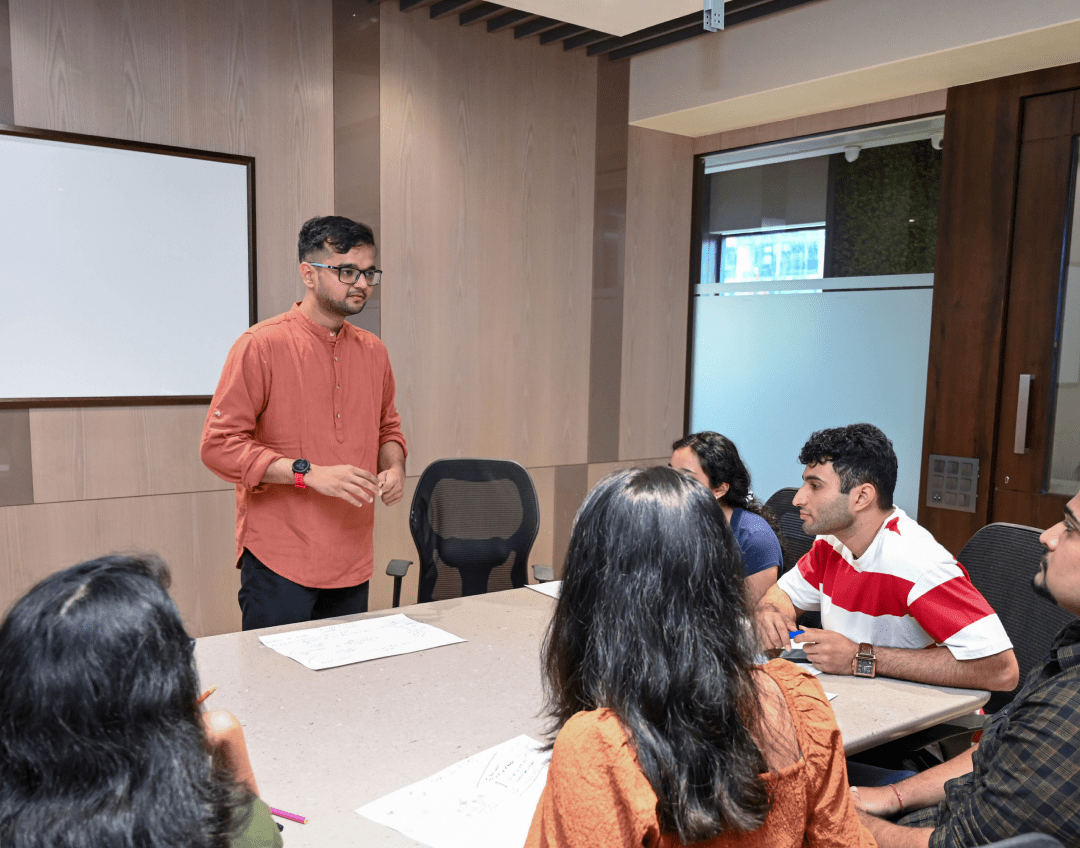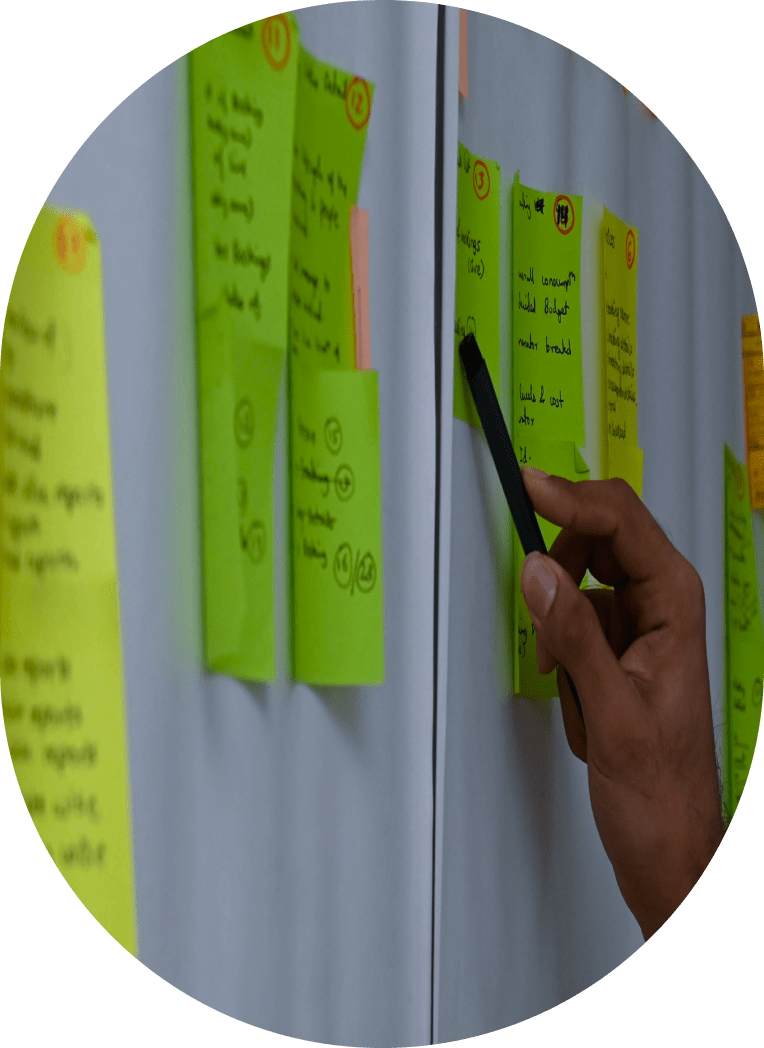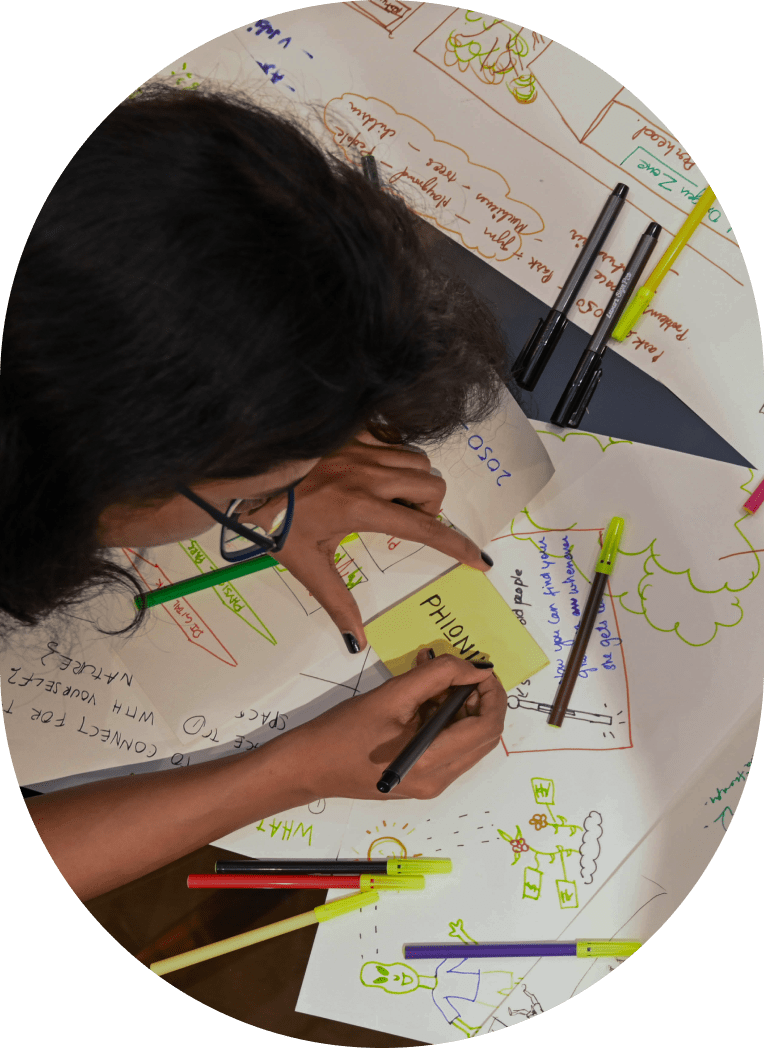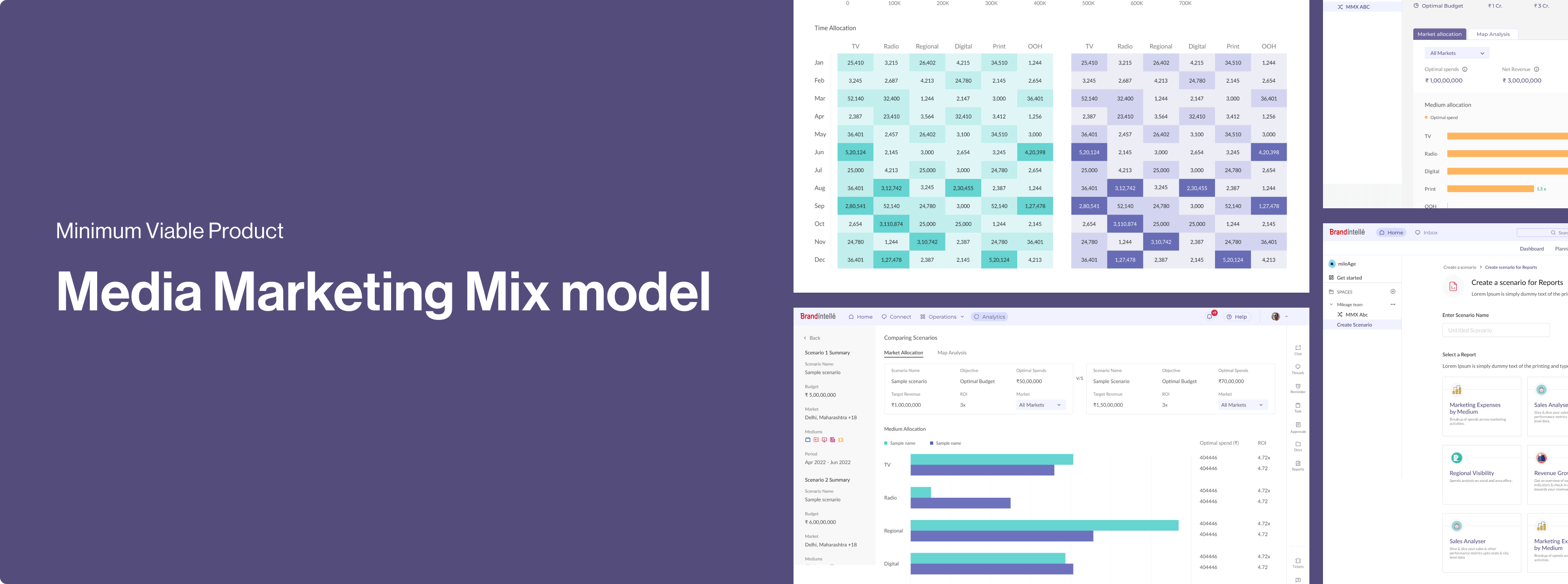
Overview
The Media Marketing Mix model is an MVP designed for our client Brandintelle. The model allowed Brands to identify the optimal mix of media channels to use for their marketing campaigns.
The model takes into account a variety of factors, such as audience demographics, budget, and competition, in order to accurately predict the best combination of media channels for a particular campaign. The model then provides detailed reports on the results of each channel, helping companies make informed decisions about which channels to use for their campaigns.
Additionally, the Platform allows for easy experimentation, enabling companies to quickly and easily modify their media mix to maximize the effectiveness of their campaigns. By providing an easy-to-use platform that quickly analyzes and optimizes a company's media mix, our Media Marketing Mix Model provides an invaluable resource for companies looking to maximize their marketing efforts.
CHALLENGE
Our primary goal was to solve the complex navigation and build a platform for Brandintelle that has a simple, seamless and intuitive experience.
Initially we had to do our own research on what exactly the marketing mix model is and how it works. We worked closely with their product managers and AI/ML team to gain a full understanding of the concept, and created a basic wireframe in Balsamiq to serve as a roadmap for designing the product from the ground up.
Creating a Space, creating a scenario, embedding third-party apps, and constructing final report screens with Data Visualization and complex workflows and navigation were some of the tasks that needed to be addressed.
DISCOVER
Based on the workshops and conversations with our stakeholders to understand the core consumers, their workflows, pain points, technical constraints and their product goals and expectations, we defined the problem statement and identified the approach to be taken for this project.
In our discovery phase, we conducted extensive research on how to create new scenarios with various entry points, customize the final report etc, and optimize the design and usability of these features.
DEFINE
In order to define the platform, we collaborated with the Brandintelle team to identify their vision, core competencies and communication objectives.
We started with user journey maps which provided a detailed visual representation of the emotions experienced by user-based personas as they progress through the platform. Since the workflow was complex, we created task flows to simply the process wherever required.
We designed, comprehended, and constructed a flexible and straightforward Information Architecture. Next, we started with wireframing to create a blueprint of the design and ensure that all our ideas were successfully conveyed and got it validated with the Client before getting started with the high fidelity design.
SKETCHES
Lo-Fi Wireframes
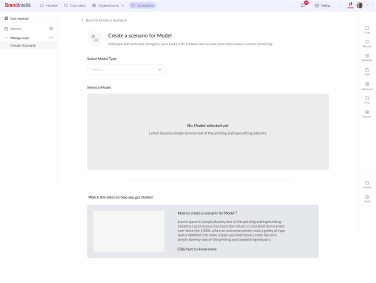

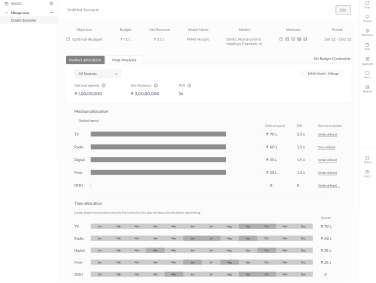

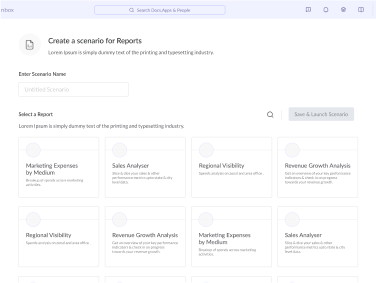



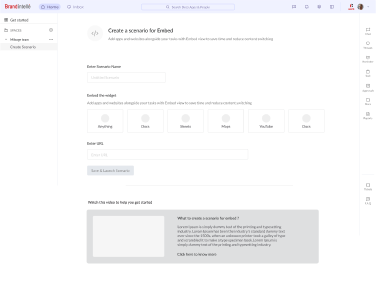

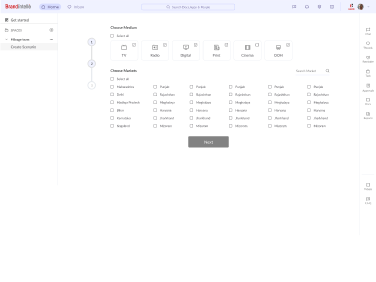

DESIGN
The approach behind designing the platform was to keep it simple and minimal, so that it becomes easy for the users to quickly navigate through the data and and adjust parameters to arrive at the desired result.
We made sure that the user was able to easily access the data which needed to be analyzed and also easily adjust the parameters for the model. We designed the UI in such a way that the user was able to view the results of their input in an easy to read and understandable format.
The interface included visuals such as graphs and charts to help the user better understand the data and results. Also the final results were saved in the scenario so that the user can refer it anytime in the future.
UI DESIGN
Due to confidentiality, only limited screens can be displayed to ensure secure data access.
what we learnt from this project?
- Understanding the domain thoroughly and research is the key to successful completion of design.
- Minimal designs are more desirable.
UI Re-Design

Overview
The Media Marketing Mix model is an MVP designed for our client Brandintelle. The model allowed Brands to identify the optimal mix of media channels to use for their marketing campaigns.
The model takes into account a variety of factors, such as audience demographics, budget, and competition, in order to accurately predict the best combination of media channels for a particular campaign. The model then provides detailed reports on the results of each channel, helping companies make informed decisions about which channels to use for their campaigns.
Additionally, the Platform allows for easy experimentation, enabling companies to quickly and easily modify their media mix to maximize the effectiveness of their campaigns. By providing an easy-to-use platform that quickly analyzes and optimizes a company's media mix, our Media Marketing Mix Model provides an invaluable resource for companies looking to maximize their marketing efforts.
CHALLENGE
Our primary goal was to solve the complex navigation and build a platform for Brandintelle that has a simple, seamless and intuitive experience.
Initially we had to do our own research on what exactly the marketing mix model is and how it works. We worked closely with their product managers and AI/ML team to gain a full understanding of the concept, and created a basic wireframe in Balsamiq to serve as a roadmap for designing the product from the ground up.
Creating a Space, creating a scenario, embedding third-party apps, and constructing final report screens with Data Visualization and complex workflows and navigation were some of the tasks that needed to be addressed.
DISCOVER
Based on the workshops and conversations with our stakeholders to understand the core consumers, their workflows, pain points, technical constraints and their product goals and expectations, we defined the problem statement and identified the approach to be taken for this project.
In our discovery phase, we conducted extensive research on how to create new scenarios with various entry points, customize the final report etc, and optimize the design and usability of these features.
DEFINE
In order to define the platform, we collaborated with the Brandintelle team to identify their vision, core competencies and communication objectives.
We started with user journey maps which provided a detailed visual representation of the emotions experienced by user-based personas as they progress through the platform. Since the workflow was complex, we created task flows to simply the process wherever required.
We designed, comprehended, and constructed a flexible and straightforward Information Architecture. Next, we started with wireframing to create a blueprint of the design and ensure that all our ideas were successfully conveyed and got it validated with the Client before getting started with the high fidelity design.
SKETCHES


Lo-Fi Wireframes


DESIGN
The approach behind designing the platform was to keep it simple and minimal, so that it becomes easy for the users to quickly navigate through the data and and adjust parameters to arrive at the desired result.
We made sure that the user was able to easily access the data which needed to be analyzed and also easily adjust the parameters for the model. We designed the UI in such a way that the user was able to view the results of their input in an easy to read and understandable format.
The interface included visuals such as graphs and charts to help the user better understand the data and results. Also the final results were saved in the scenario so that the user can refer it anytime in the future.
UI DESIGN
Due to confidentiality, only limited screens can be displayed to ensure secure data access.


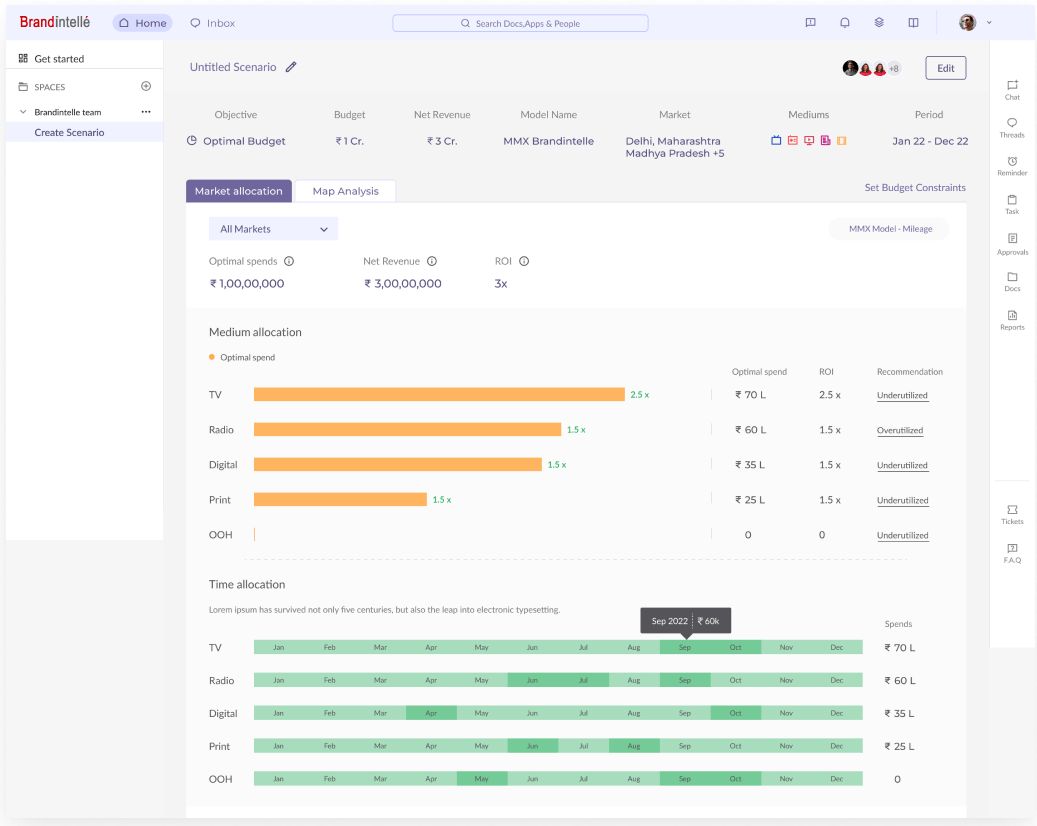

what we learnt from this project?
- Understanding the domain thoroughly and research is the key to successful completion of design.
- Minimal designs are more desirable.



